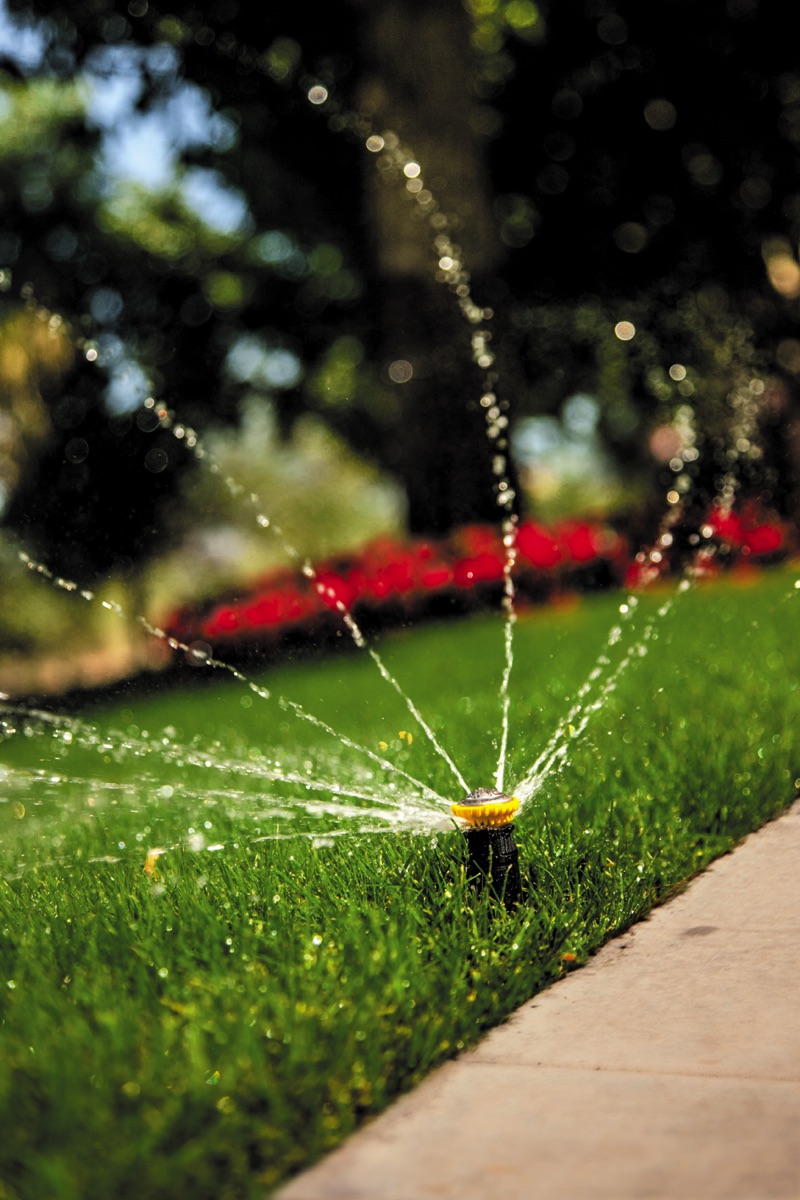
What Happens To Water After It Leaves The Irrigation System?
August 26, 2014
 Much has been written about how to conserve water in a turf and landscape situation. And well it should. Water is our most precious resource. We can’t live without it, and we need to do all that we can to conserve it and preserve it, quantity and quality wise.
Much has been written about how to conserve water in a turf and landscape situation. And well it should. Water is our most precious resource. We can’t live without it, and we need to do all that we can to conserve it and preserve it, quantity and quality wise.
So far however, most of the attention has been directed towards the irrigation system. Many improvements have been made, and more can be made, to improve efficiencies and thus conserve water.
But what happens to that water once it leaves the control of the irrigation system?
Mother Nature takes over. That’s what happens.
And Mother Nature has some cruel and inefficient ways of allowing water to interact with the soil.
There are 4 primary ways that water interacts with the soil.
1. It penetrates the soil and the plants use it. This is good.
2. The water penetrates but it channels thru the soil. Not Good.
3. The water doesn’t penetrate and it runs off. Not Good.
4. The water doesn’t penetrate & it forms puddles. Not Good.
These 4 situations can cause a well designed and well operated irrigation system with a high percentage distribution uniformity (DU) to lose that high efficiency. High surface DU’s are compromised because the water can’t get into the soil profile and/or can’t uniformly move around within the soil profile.
Total DU, which includes surface DU and subsurface DU, is then much lower. And this drop in total DU forces increased run times on the irrigation system to make up for the water lost to the inefficiencies of how water interacts with the soil.
So what do we do? Or what can we do?
These inefficiencies are caused by four conditions.
1. Physical Problems with the Soil.
2. Chemical Problems with the Soil.
3. Water Repellency Problems with the Soil.
4. The Natural Behavior of Water.
There are many possible solutions or control methods. But in general, any physical problem is going to be mitigated by some kind of a physical control method. Aerification, de-thatching, deep tining, venting, HydroJet, and PlanetAire, are just some of the possible solution methods.
As for the chemical problems, these are mitigated by some kind of chemical means. Soil sulfur, sulfuric acid, gypsum and limestone, are just some of the possible correction methods.

The last two, water repellency and the natural behavior of water, are much easier to deal with since there is only one control method. Soil wetting amendments are the only solution to these two problem conditions. Soil wetting amendments reduce water repellency and they lower the adhesive and cohesive tensions of water to reduce the natural behavior of water to cling to something. These two tensions cause water to behave in a very erratic fashion as it interacts with the soil and organic matter.
So when water leaves the irrigation system and it lands on the soil or organic layer, we need to be sure that it can get into the soil profile and move around within the soil profile in a very efficient manner. Just letting it fall on the soil and letting Mother Nature take control and possibly destroying the high level of efficiency designed into the irrigation system isn’t Water Smart.
Therefore, the next step in Water Conservation is to find these efficiency robbing conditions and correct them so water can carry out its two given responsibilities, survival and distribution, to the highest degree possible.
The irrigation system is designed to get water from point A to point B and then surface distribute that water as efficiently and uniformly as possible. But after the water leaves the control of the irrigation system we need to ensure that the water isn’t lost and is utilized effectively.
About the Author:
Ken Mauser is a Consulting Agronomist who has served as Aquatrols' Territory Manager in the Western United States for more than 20 years.
